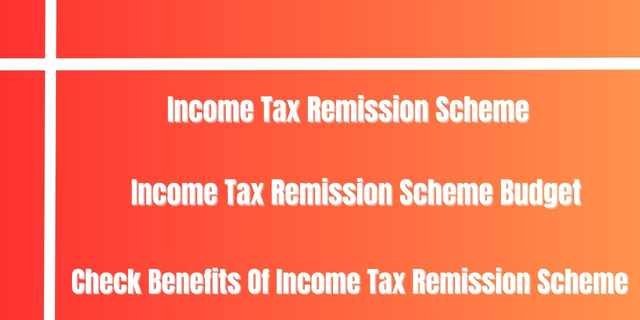Income Tax Remission Scheme was introduced in Budget 2024. While presenting the interim budget 2024 the finance minister of India presented that there is no change in income tax regimes in 2024. However, the government has decided not to pursue the recovery of old and disputed direct taxes up to Rs 25,000 until the financial year 2009-10. Additionally, direct tax demands up to Rs 10,000 for the financial years 2010-11 to 2014-15 will be withdrawn. With the help of the scheme, more than 1 crore taxpayers in India will get the benefits.
What is the Income Tax Remission Scheme?
The Income Tax Remission Scheme was introduced by Finance Minister Nirmala Sitaramanan in the presentation of the interim budget 2024. Under the scheme, the Government of India has decided to not pursue the recovery of old and disputed direct taxes for up to INR 25000 until the financial year 2009-10 and direct tax demands up to Rs 10,000 for the financial year 2010-11 to 2014-15. With the help of the scheme, more than 1 crore taxpayers in India will get relief. With the help of the Income Tax remission scheme, financially unstable business owners can relieve the burden of heavy taxes laid upon them by the previous government.

Also Read: Budget 2024 Highlights
Objective of Income Tax Remission Scheme
The main objective of launching the Income Tax Remission Scheme is to help middle-class business owners in India. With the help of a scheme, middle-class business owners can reduce the burden of income tax that is laid upon them. The Government of India has decided to not recover the old and disputed direct taxes for up to INR 25000 until the financial year 2009-10. The Government of India also decided to not pursue the direct tax demands of up to INR 10,000 for the financial year 2010-11 to 2014-15. More than 1 crore middle-class business owners will avail the benefits of this scheme.
Key Highlights of Income Tax Remission Scheme
| Name of the scheme | Income Tax Remission Scheme |
| Launched by | Government of India |
| Objective | Income Tax Remission |
| Beneficiaries | Small business owners |
| Official website |
Eligibility Criteria
- The applicant must be a permanent resident of India.
- The applicant must be a middle-class business owner.
- The applicant must have an income tax burden from the prescribed period
Benefits of the Scheme
- The Income Tax Remission Scheme will help business owners to reduce the burden of taxes.
- More than 1 crore citizens of India will avail the benefits of this scheme.
- The government has also decided to not pursue a direct tax burden from the financial year 2010/-11 to 2014-15.
- The government will not pursue any direct tax burden from the financial year 2009-10 of upto INR 25,000.
- The middle-class business owners can get relief from the tax burden laid upon them by the previous government.
Required Documents
- Aadhar Card.
- Domicile.
- Income Certificates.
- Photograph.
- Category Certificate
Date of Announcement
- The Income Tax Remission Scheme was announced on 1st February 2024.
Implementation Process
- The scheme will be implemented after the release of the interim budget in 2024.
- All middle-class business owners can avail the benefits of this scheme.
- All the applicants must fill out the application form to avail the benefits of the scheme.
- The scheme will be implemented to help middle-class business owners who have Tax burdens.
How to Get Income Tax Remission Scheme Benefits?
- To get income tax remission scheme benefits the applicant can go to the official website.
- On the homepage click on the option Apply Online.
- A new page will appear on your screen.
- Fill out all the details that are asked and attach all the required documents.
- Click on the option Submit to complete your process.
FAQS
All middle-class business owners in India are eligible to apply for the income tax remission scheme.
The government has decided not to recover old and disputed direct taxes up to Rs 25,000 until the financial year 2009-10.
This scheme was announced in the interim budget 2024.
The main objective of launching the scheme is to help the middle-class businessman.
